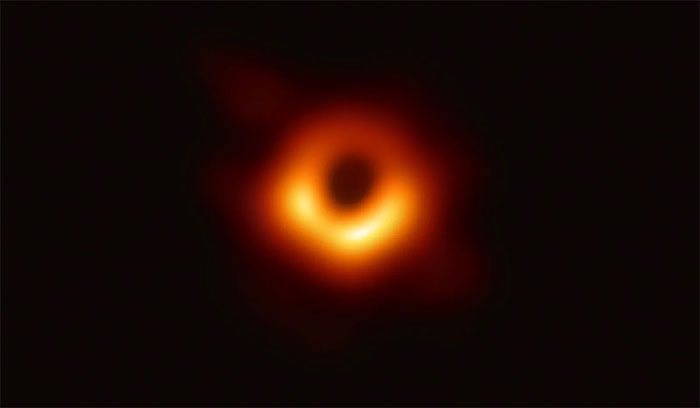A group of scientists has discovered the first conclusive evidence that black holes can spin.
According to the South China Morning Post, after over 20 years of sifting through observational data from a global network of radio telescopes, the research team found that the supermassive black hole in the M87 galaxy emits jets that oscillate like a spinning top.

Simulation of jets emitted from a black hole. (Image: Handout).
The study’s results, published in the journal Nature, indicate that it takes about 11 years for these jets to complete one cycle.
Astronomer Gou Lijun from the National Astronomical Observatories of China, who was not involved in the research, commented: “This is the first observational evidence that shows black holes not only spin but also tilt. This discovery was made possible through a long accumulation process and thorough analysis of observational data, highlighting the importance of telescopes and astronomers collaborating to enhance human understanding of the universe.”
According to Gou, the spinning motion of a gyroscope usually consists of two components: the rotation of the gyroscope itself and the continuous change in the direction of the axis of rotation around a central point. This process is known as the precession cycle.
For example, the Earth spins once every 24 hours to create day and night. Meanwhile, Earth completes one precession cycle in about 26,000 years. Currently, the Earth’s axis tilts approximately 23 degrees relative to its orbit around the Sun.
Scientists utilized a hot gas vortex surrounding black holes to study their rotation. Gou noted that most black holes spin incredibly fast, with some even rotating close to the speed of light.

Illustration of a black hole in the M87 galaxy. (Image: AP)
In 2019, humanity had the first opportunity to capture a direct image of the supermassive black hole in the M87 galaxy, located about 55 million light-years from Earth and weighing 6.5 billion times that of the Sun.
In a detailed analysis of the M87 black hole, Cui Yuzhu, a researcher at the Zhejiang Laboratory (Hangzhou), and colleagues found that the jets from this black hole, formed from particles ejected from its poles, appeared to be pointing in a different direction in 2017 compared to previous observations.
The Xinhua News Agency quoted Cui, stating that the researchers later synthesized data collected from 2000 to 2022 from 20 radio telescopes located in China, Japan, South Korea, Italy, and Russia. The analysis results indicated that these jets move periodically, with a cycle of about 11 years and a tilt angle of approximately 10 degrees.
To understand what causes the precession cycle of these jets, the research team conducted theoretical analysis and numerical simulations with the assistance of supercomputers at the National Astronomical Observatory of Japan. They discovered that because the actual rotation axis of the black hole is not perfectly aligned with the rotation axis of the surrounding vortex, this misalignment has caused the jets to oscillate. This phenomenon was also previously predicted in Albert Einstein’s theory of general relativity.
“This discovery of precession provides clear evidence that the supermassive black hole in M87 is indeed spinning,” the researchers wrote.
However, scientists still need to investigate the rotation speed of the M87 black hole and how to leverage these insights to clarify the formation processes of supermassive black holes. This question has long existed in this field.





















































